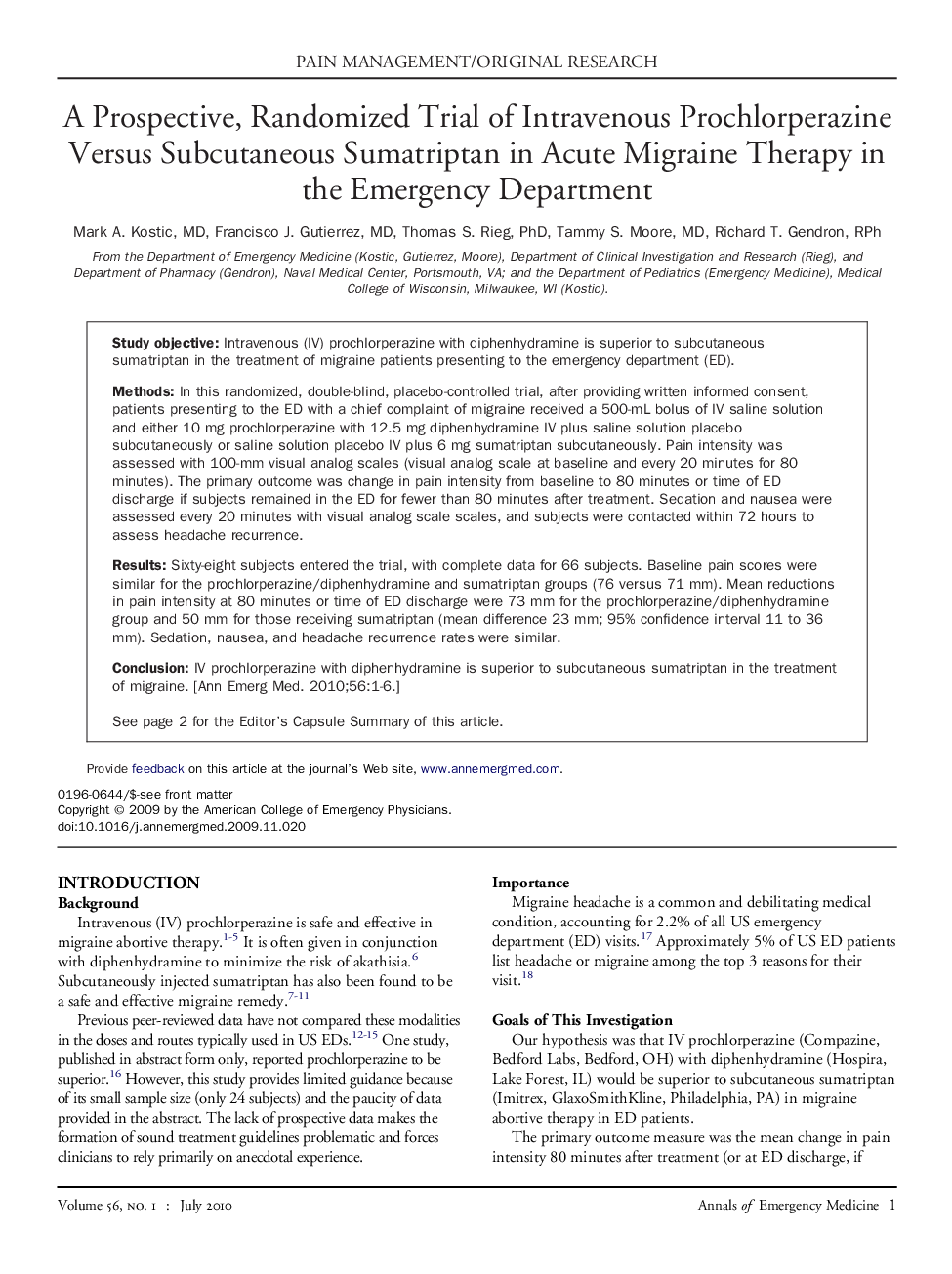| Article ID | Journal | Published Year | Pages | File Type |
|---|---|---|---|---|
| 3231821 | Annals of Emergency Medicine | 2010 | 6 Pages |
Study objectiveIntravenous (IV) prochlorperazine with diphenhydramine is superior to subcutaneous sumatriptan in the treatment of migraine patients presenting to the emergency department (ED).MethodsIn this randomized, double-blind, placebo-controlled trial, after providing written informed consent, patients presenting to the ED with a chief complaint of migraine received a 500-mL bolus of IV saline solution and either 10 mg prochlorperazine with 12.5 mg diphenhydramine IV plus saline solution placebo subcutaneously or saline solution placebo IV plus 6 mg sumatriptan subcutaneously. Pain intensity was assessed with 100-mm visual analog scales (visual analog scale at baseline and every 20 minutes for 80 minutes). The primary outcome was change in pain intensity from baseline to 80 minutes or time of ED discharge if subjects remained in the ED for fewer than 80 minutes after treatment. Sedation and nausea were assessed every 20 minutes with visual analog scale scales, and subjects were contacted within 72 hours to assess headache recurrence.ResultsSixty-eight subjects entered the trial, with complete data for 66 subjects. Baseline pain scores were similar for the prochlorperazine/diphenhydramine and sumatriptan groups (76 versus 71 mm). Mean reductions in pain intensity at 80 minutes or time of ED discharge were 73 mm for the prochlorperazine/diphenhydramine group and 50 mm for those receiving sumatriptan (mean difference 23 mm; 95% confidence interval 11 to 36 mm). Sedation, nausea, and headache recurrence rates were similar.ConclusionIV prochlorperazine with diphenhydramine is superior to subcutaneous sumatriptan in the treatment of migraine.
